|
Highlights
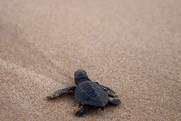
NOAA and the Deepwater Horizon Regionwide Trustee Implementation Group have finalized their first restoration plan which includes 11 projects to restore sea turtles, marine mammals, oysters, and birds. The group includes all four federal agencies and all five Gulf states, collaborating and coordinating to restore the environment after the 2010 oil spill. Contact: Jamie Schubert
|

Changes in habitat mean changes for wildlife, including for species valued as commercial and recreational fisheries. We’re already seeing some ways climate change is affecting the Chesapeake Bay. From warming waters to hypoxic areas, learn what’s happening, and what it means for fish and other Bay life. Contact: Kim Couranz
|
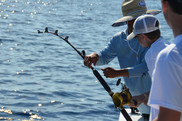
Return ‘Em Right is a new angler-driven initiative that will tackle release mortality from barotrauma in Gulf reef fish. The program offers Gulf of Mexico anglers an opportunity to sharpen their release skills when targeting reef fish like groupers and snappers. In return, anglers will receive release gear to use on the water. Contact: Julia Goss
|
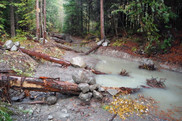
The National Fish Habitat Partnership (NFHP) is a science-based, state-led initiative to protect, restore, and enhance aquatic ecosystems across the United States. NOAA Fisheries has been a key partner since its establishment. Each year, NFHP hosts the Waters to Watch campaign, which raises the visibility of some of the best on-the-ground aquatic habitat conservation projects implemented by individual FHPs. We are highlighting five coastal, estuarine, and marine projects in the 2021 Waters to Watch campaign that take place in habitats where NOAA works. Contact: Alex Atkinson
|
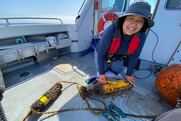
Each year, NOAA provides many opportunities for students to work with regional science teams and academic collaborators across the country. Despite the challenges of navigating a virtual work environment, this year was no different. Four students were mentored by NOAA researchers in Washington and California. They contributed to unique projects to advance our understanding of deep-sea organisms—particularly corals and sponges. Contact: Dani Weissman
|

Join us in celebrating National Hispanic Heritage Month through October 15, which honors cultures and contributions of Hispanic and Latino Americans and the heritage of Latin American countries. We recently profiled three professionals working in the NOAA Habitat Community: Natalie Cosentino-Manning, Alejandra Mickle-Arce, and Zuzy Abdala. Learn more about their careers and backgrounds.
|
|
|
Habitat Across NOAA
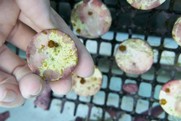
An international team of researchers has published a scientific paper that highlights the first successful demonstration of assisted gene flow in corals using cryopreserved sperm. It suggests that large-scale assisted gene flow can efficiently enhance the genetic diversity and adaptability of threatened coral in the face of rapid environmental changes.
|
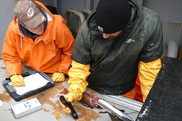
A new NOAA Fisheries study is the first to look at the relationship between fish body condition and reproductive success in a variety of habitats, with a focus on deep-sea coral and sponge ecosystems. As part of the study, scientists are developing methods to accurately assess rockfish condition by measuring fat content, which is an indicator of health in Alaska rockfish. This research addresses the North Pacific Fishery Management Council’s priority of understanding the importance of deep-sea coral and sponge habitat for commercially valuable fish.
|
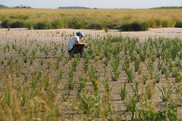
The International Guidelines on Natural and Nature-Based Features for Flood Risk Management are now available. It emphasizes the role of nature-based solutions and natural infrastructure (e.g. beaches, marshes) as alternatives to conventional hardened infrastructure to help reduce risks from flooding and coastal storms. This is the culmination of a 5-year collaboration between NOAA, the U.S. Army Corps of Engineers, and many international partners—including more than 175 authors and contributors from more than 75 organizations and 10 countries.
|
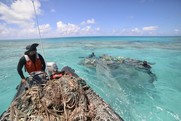
Scientists and divers from NOAA’s Pacific Islands Fisheries Science Center and local nonprofit Papahānaumokuākea Marine Debris Project recently returned to Honolulu from a 30-day removal mission. The team removed marine debris from the shallow reefs and shorelines of the Papahānaumokuākea Marine National Monument. This year, they removed nearly 124,000 pounds of marine debris from reefs and shorelines and successfully disentangled a 5-year-old adult female Hawaiian monk seal. They collected 118,400 pounds of derelict fishing nets, including 295 large nets.
|
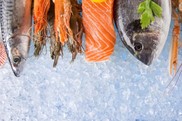
October is National Seafood Month at NOAA Fisheries, and a fitting time to celebrate that the United States is recognized as a global leader in sustainable seafood—both wild-caught and farmed. The recipe for sustainable seafood includes strong science, responsive management, and enforced compliance. More habitat means more fish.
|
|
|
Announcements
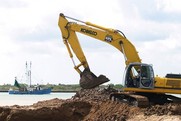
New speakers for the monthly Restoration Webinar Series--hosted by NOAA, the U.S. Fish and Wildlife Service, and the Society for Ecological Restoration--have been scheduled through December 2021. Scheduled topics include salt marsh restoration in California and seawall enhancements to benefit juvenile salmon in Seattle. Be sure to check out the new offerings!
|
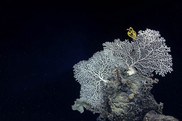
The NOAA-led Deepwater Horizon Open Ocean Trustee Implementation Group will hold its annual public meeting, and a special session on deep-sea coral communities via an interactive webinar on October 28, 2021. The webinar, starting at 12 p.m. CT is open to everyone; we encourage your attendance and participation. Register today!
|
|
|
|
|